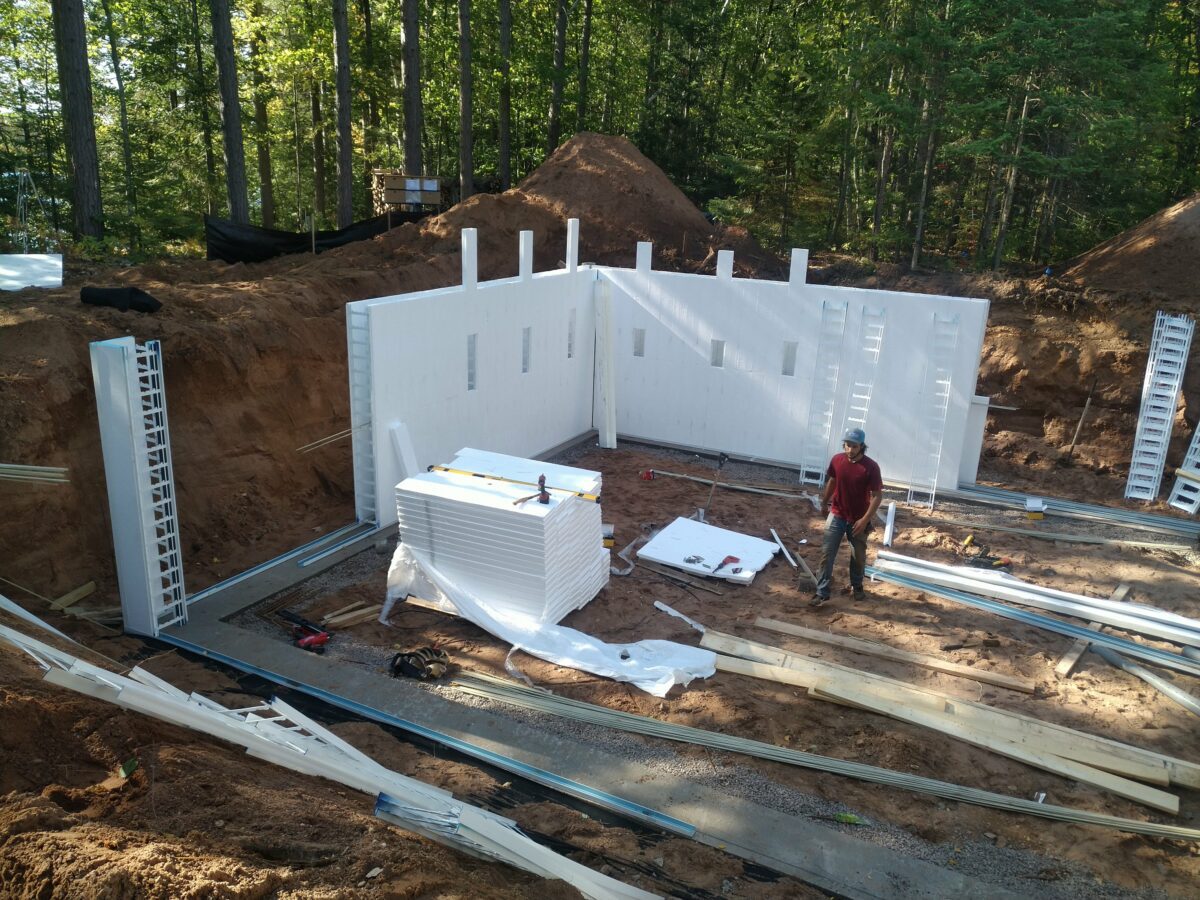
Blog
Exploring the Depths: Understanding Different Types of Excavation
Excavation plays a crucial role in home construction, remodeling, and landscaping projects. Excavation is more than moving dirt or digging holes. Whether you're building a new house, adding a basement, or creating a driveway, having a knowledgeable excavator who understands different materials, water management, and the building process is key. Here, we will dive into the different types of excavation specific to home projects, letting you know what to expect, and sharing some expert tips.
What Is Excavation and Why Do We Do It?
Excavation involves the process of removing soil, rock, and other materials from a specific area when creating a foundation for a building. It is a fundamental step in most home projects, ensuring stability, proper drainage, and the overall success of the construction. Whether you're clearing trees and putting in a driveway, building a house with a basement, building a slab-on-grade, or preparing landscapes, having a knowledgeable excavator will help ensure it's done right and will save time and money during the project and in the future.
Understanding Different Types of Excavation: Preparing For Your Next Project
Let's explore the most common types of excavation, so you'll know what to anticipate for your next project.
Basement & Crawl Space Excavation
Excavating a basement or crawl space is a great way for homeowners to add extra living space or storage under their house. It also provides a safe place to go in the event of strong winds or dangerous storms. It involves digging out a large portion of the ground to create a stable foundation for the basement or crawl space.
Although there are many benefits of a basement or crawlspace, any time we want to live below ground and be warm and dry while doing it, there are a lot of things that have to be done right.
Understanding soil conditions is important not only for the stability of the building foundation but also for the way water acts in different soils and how to ensure proper drainage. It’s not uncommon to have different layers and differing soil conditions when digging basements. Proper drainage, waterproofing, and free-draining backfill materials are key and should not be ignored in the construction. Also, exterior foam insulation is the best way to insulate any basement or crawlspace as it keeps the concrete from going through freeze-thaw cycles and will add to the life of the concrete. And lastly. It's impossible to have dry concrete if it's not warm concrete. Cold concrete will always be a condensation surface even if there is poly under the slab.
Homeowner Tip: Before starting, check for any local permits required and ensure your plans meet building codes to avoid legal issues down the road.
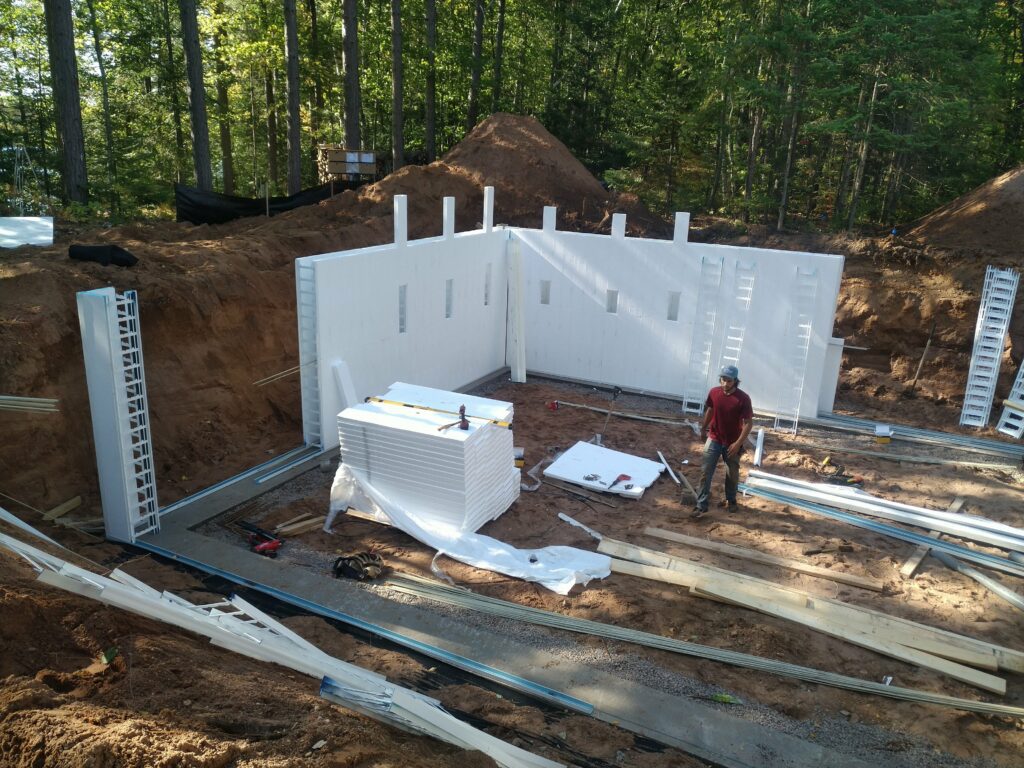
Driveway Excavation
Driveway excavation is the first step in getting your new driveway ready. This process includes removing the existing topsoil because it contains organics, will hold moisture, and will not compact properly. Grade the area and lay a stable foundation to support the weight of heavy trucks during the building process and vehicles' use for years to come.
This base could be larger stone or geotextiles like geogrid or geotextile fabric. If trucking costs are high, the use of geotextiles can reduce the amount of gravel or rock in a project and still achieve a good road.
Note: Geotextiles are a problem for trenching through with utilities. If geotextiles are used, all utilities should be run before.
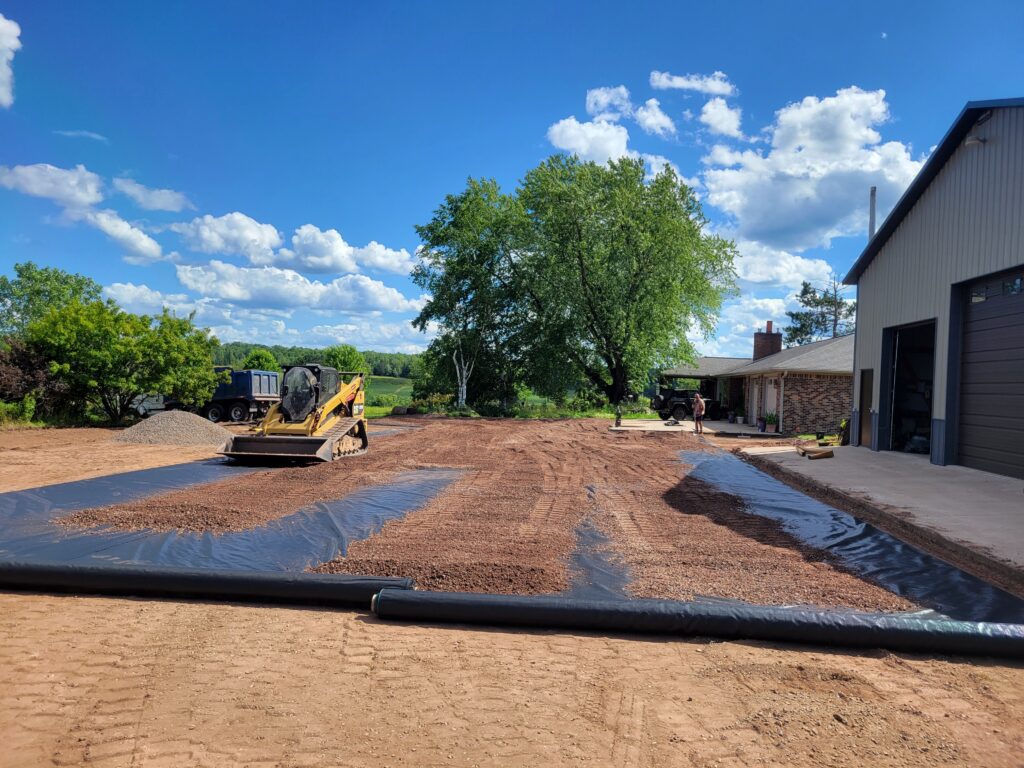
After the base is laid, gravel will be placed and compacted to form the driveway. Expect heavy machinery like excavators and bulldozers on-site to remove soil and rocks, followed by compaction equipment to ensure a solid base. Drainage systems may also be installed to prevent water accumulation and extend the driveway's lifespan. Proper driveway excavation ensures a smooth, level surface that can withstand daily use and the spring-thaw weather conditions of Northern Wisconsin.
Homeowner Tip: Discuss with your contractor the type of driveway surface you want and any future plans (asphalt, concrete, pavers), as it may require different road base preparation.
Trench Excavation
Trench excavation is used to dig narrow, and sometimes deep channels for utilities like water, gas, electricity, and sewage lines. Careful planning is essential to avoid damaging existing infrastructure and to ensure the trenches are properly supported. On this site, you'll see heavy machinery like backhoes and trenchers, along with safety measures like shoring and trench boxes to prevent collapses. Workers will also conduct frequent inspections and follow local regulations for safety and compliance. You might run into this type of excavation when installing new utility lines or repairing and maintaining existing ones.
Homeowner Tip: The Diggers Hotline does not mark private lines, such as power to outbuildings, light poles, or gas lines from your LP tank. Your excavator won't know about these unless you inform them. Although many excavators have their own underground locator equipment, they might not use it unless they are aware of these private lines.
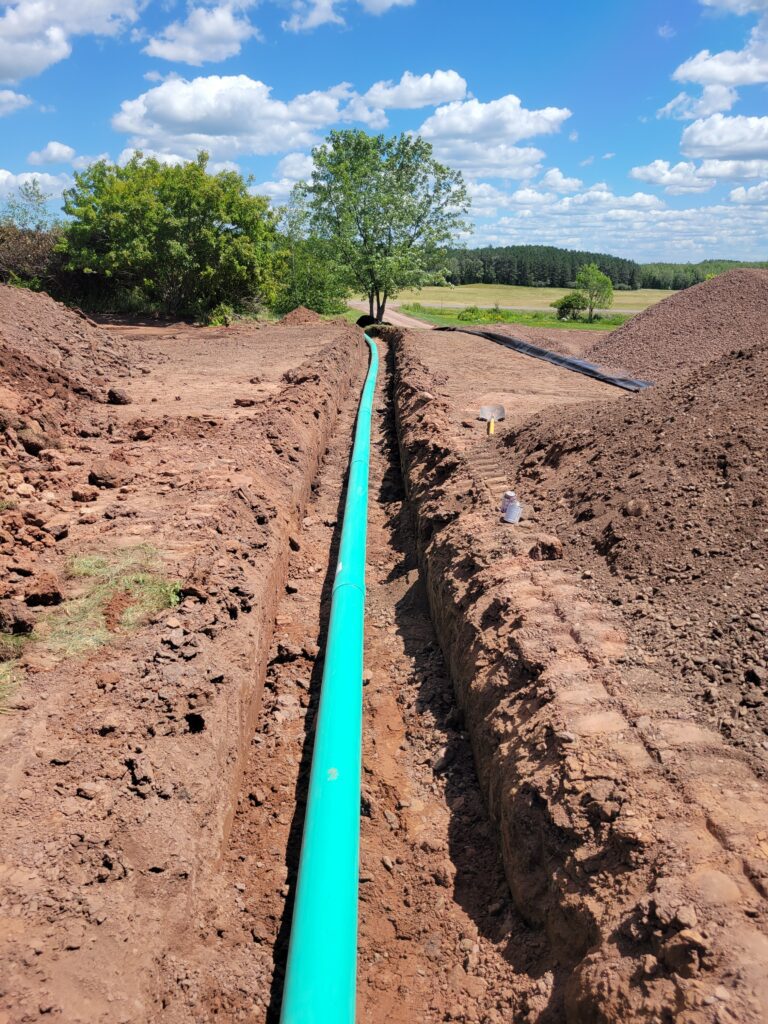
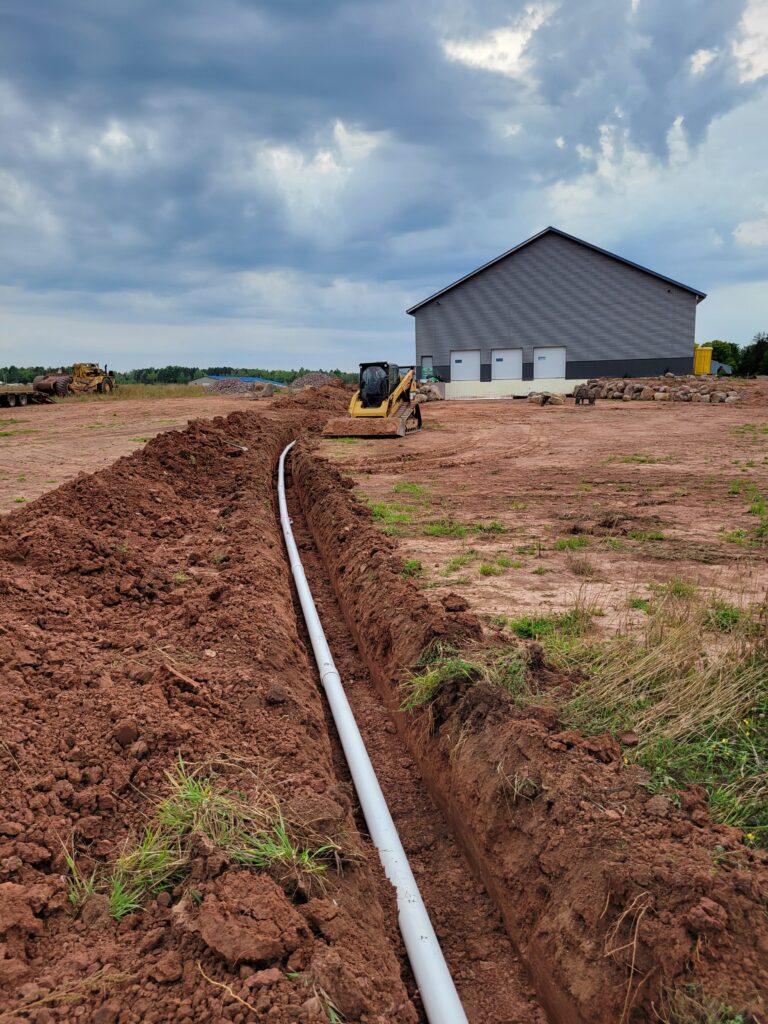
Cut and Fill Excavation
Cut and fill excavation is when soil is removed from a higher area and used to fill a lower area to create a level surface for construction. This method is common in hilly or uneven terrains to provide a stable foundation for buildings, roads, and other structures. It helps reduce soil erosion and ensures proper drainage, making it a key technique in many home construction projects. This also can help minimize project costs, as it reduces the amount of material that needs to be hauled in.
When doing cut and fill excavation, you can expect several steps. First, an initial site assessment, and possible surveying and marking. Then comes prepping the fill area, excavating the cut area, transporting the soil, and filling the lower area. Heavy machinery like bulldozers and excavators are usually used. The soil is compacted to prevent future settling issues. Lastly, follow-up inspections are done to ensure stability and proper drainage before moving on with further construction.
Homeowner Tip: Verify with your contractor that the filled areas are properly compacted to prevent future settling issues that can affect the stability of your structures.
Topsoil Excavation
Topsoil excavation involves removing the top layer of soil, which is full of organic matter and nutrients. This process usually includes careful removal and storage of the topsoil, often used in landscaping projects. The topsoil is then reused to create lawns and other green spaces. Proper excavation helps preserve this nutrient-rich layer and lowers the cost of the project by reducing the amount that needs to be brought in. Separating topsoil from other soils allows the other soils to be used for cut and fill, as it keeps them free of the organic matter found in topsoil.
When re-using existing topsoil, special soil conditioners or equipment may be needed to make the surface smooth enough for lawns.
Homeowner Tip: If you're planning a garden or landscaping project, coordinate with your contractor to save and reuse the topsoil for planting. If the topsoil contains roots or rocks, it can still be used as a base. The contractor can then bring in screened topsoil to dress the surface, making it smooth for seeding the lawn.
Rock Excavation
During a rock excavation, large rock formations or boulders are removed from a construction site. It requires specialized equipment and techniques like drilling, blasting, or hydraulic hammers. This process needs careful planning and safety measures to manage risks. Rock excavation is crucial for creating foundations in areas with a lot of rock, ensuring a stable base for home construction.
Homeowner Tip: Be prepared for potential noise and dust during rock excavation. Discuss with your contractor how they plan to minimize disruption.
Now, We're Ready to Start
At KV Build, we get it – excavation might not be the most glamorous part of your home project, but it's absolutely crucial. Our team of experienced professionals is here to provide expert knowledge and lasting value, helping you get the best results.
From digging foundations to clearing space for that dream backyard, we've got you covered. Get in touch with us today to discuss your project and see how we can help you transform your home.

Contact us
Let’s discuss your project.
KV Build is a full-service new construction, renovation, insulation and excavation contractor specializing in whole-home projects throughout Northern Wisconsin. Tell us about your project. We’re eager to be of service.
